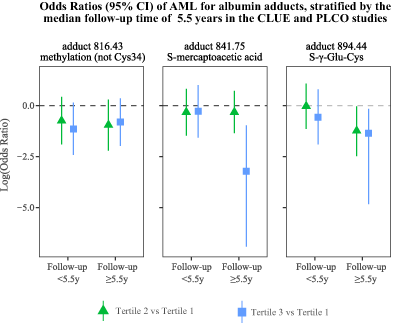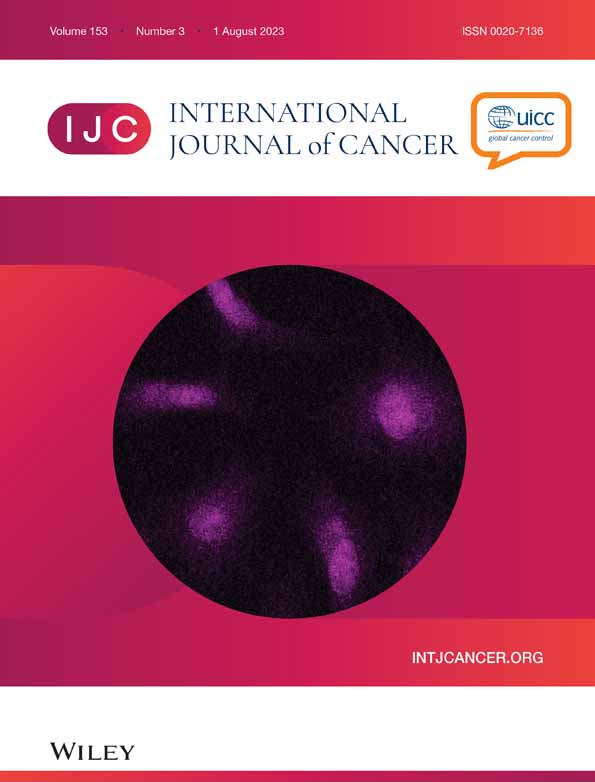A nested case-control study of untargeted albumin adductomics and acute myeloid leukemia
Mohammad L. Rahman and Bryan A. Bassig contributed equally to this work.
Stephen M. Rappaport, Qing Lan and Nathaniel Rothman co-supervised this work.
Bryan A. Bassig is employed by the U.S. Centers for Disease Control and Prevention, National Center for Health Statistics. All work on this study was conducted while employed by the U.S. National Cancer Institute
Abstract
Environmental exposures often produce reactive electrophiles in vivo, leading to oxidative stress, which plays a major role in carcinogenesis. These electrophiles frequently form adducts with human albumin, which can be measured to assess in vivo oxidative stress. Here, we aimed to examine the associations between circulatory albumin adducts and acute myeloid leukemia (AML), the most common adult myeloid leukemia that showed consistent associations with environmental exposures. We conducted a nested case-control study of 52 incident AML cases and 103 controls matched on age, sex and race within two prospective cohorts: the CLUE and PLCO studies. We measured 42 untargeted albumin adducts in prediagnostic samples using liquid chromatography-high-resolution mass spectrometry. Circulatory albumin adducts were associated with AML in conditional logistic regression models. For instance, higher levels of Cys34 disulfide adduct of the S-γ-glutamylcysteine, a precursor of the essential antioxidant, glutathione were associated with a lower risk of AML (odds ratios [95% confidence intervals]) for the 1st, 2nd and 3rd tertiles were 1.0, 0.65 (0.31-1.36) and 0.31 (0.12-0.80), respectively (P-trend = .01). These associations were largely driven by effects present among cases diagnosed at or above the median follow-up time of 5.5 years. In conclusion, applying a novel approach to characterize exposures in the prediagnostic samples, we found evidence supporting the notion that oxidative stress may play a role in the pathogenesis of AML. Our findings offer insight into AML etiology and may be relevant in identifying novel therapeutic targets.
Graphical Abstract
What's new?
Oxidative stress is a major factor in carcinogenesis, being linked particularly to the formation of adducts that are produced by reactions between electrophiles and intracellular nucleophilic substances. The present study explored the role of albumin adducts formed by reactions with electrophiles from endogenous and exogenous sources in the development of acute myeloid leukemia (AML). Applying a novel approach to characterize exposures, we found that the glutathione precursor S-γ-glutamylcysteine, with elevated levels of Cys34 disulfide adduct, is associated with reduced AML risk. The findings offer insight into AML etiology and may be relevant in identifying novel therapeutic targets.
CONFLICT OF INTEREST STATEMENT
No potential conflicts of interest relevant to this article were reported.
Open Research
DATA AVAILABILITY STATEMENT
Original LC-HRMS data (mass spectra and selected ion chromatograms) for characterizing the modifications to the T3 peptide are available in the footnoted publications listed in Table S2 and in the Figures S1 to S3. Other data that support the findings of this study are available from the corresponding author upon request.





